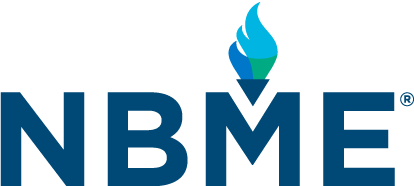
RESEARCH LIBRARY
RESEARCH LIBRARY
View the latest publications from members of the NBME research team
Journal of Educational and Behavioral Statistics: Vol 45, Issue 5, 2020
This article describes a method for identifying and reporting unexpectedly high or low subscores by comparing each examinee’s observed subscore with a discrete probability distribution of subscores conditional on the examinee’s overall ability.
Handbook of Automated Scoring
In this chapter we describe the historical background that led to development of the simulations and the subsequent refinement of the construct that occurred as the interface was being developed. We then describe the evolution of the automated scoring procedures from linear regression modeling to rule-based procedures.
Educational Measurement: Issues and Practice, 39: 30-36
This article proposes the conscious weight method and subconscious weight method to bring more objectivity to the standard setting process. To do this, these methods quantify the relative harm of the negative consequences of false positive and false negative misclassification.
Springer International Publishing; 2019
This handbook provides an overview of major developments around diagnostic classification models (DCMs) with regard to modeling, estimation, model checking, scoring, and applications. It brings together not only the current state of the art, but also the theoretical background and models developed for diagnostic classification.
On the Cover. Educational Measurement: Issues and Practice, 38: 5-5
This informative graphic reports between‐individual information where a vertical line—with dashed lines on either side indicating an error band—spans three graphics allowing a student to easily see their score relative to four defined performance categories and, more notably, three relevant score distributions.
CBE—Life Sciences Education Vol. 18, No. 1
This article briefly reviews the aspects of validity that researchers should consider when using surveys. It then focuses on factor analysis, a statistical method that can be used to collect an important type of validity evidence.
Academic Medicine: March 2019 - Volume 94 - Issue 3 - p 314-316
The United States Medical Licensing Examination Step 2 Clinical Skills (CS) exam uses physician raters to evaluate patient notes written by examinees. In this Invited Commentary, the authors describe the ways in which the Step 2 CS exam could benefit from adopting a computer-assisted scoring approach that combines physician raters’ judgments with computer-generated scores based on natural language processing (NLP).
Educational Measurement: Issues and Practice, 39: 37-44
This article presents the results of an experiment in which content experts were randomly assigned to one of two response probability conditions: .67 and .80. If the standard-setting judgments collected with the bookmark procedure are internally consistent, both conditions should produce highly similar cut scores.
Psychometrika 84, 147–163 (2019)
This paper provides results on a form of adaptive testing that is used frequently in intelligence testing. In these tests, items are presented in order of increasing difficulty. The presentation of items is adaptive in the sense that a session is discontinued once a test taker produces a certain number of incorrect responses in sequence, with subsequent (not observed) responses commonly scored as wrong.
Journal of Educational Measurement: Volume 55, Issue 4, Pages 564-581
Smoothing techniques are designed to improve the accuracy of equating functions. The main purpose of this study is to compare seven model selection strategies for choosing the smoothing parameter (C) for polynomial loglinear presmoothing and one procedure for model selection in cubic spline postsmoothing for mixed‐format pseudo tests under the random groups design.
